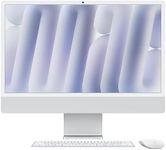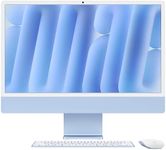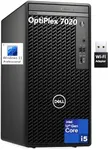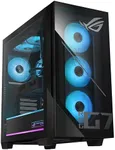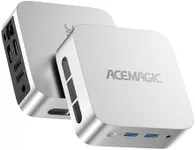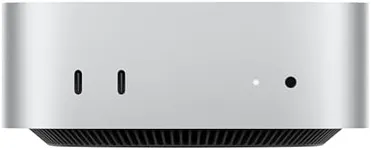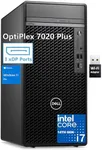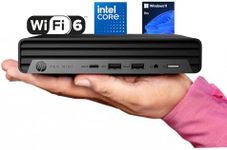Buying Guide for the Best Desktop Computer For Music Production
Choosing the right desktop computer for music production is crucial to ensure smooth and efficient workflow. Music production involves running multiple software applications, plugins, and handling large audio files, so your computer needs to be powerful enough to handle these tasks without lag or crashes. Here are some key specifications to consider when selecting a desktop computer for music production, along with explanations to help you make an informed decision.Processor (CPU)The processor, or CPU, is the brain of your computer and is responsible for executing instructions from your software. For music production, a powerful CPU is essential because it will handle the processing of audio effects, virtual instruments, and other tasks. CPUs are typically divided into segments based on their core count and clock speed. For basic music production, a quad-core processor with a clock speed of around 3.0 GHz may suffice. However, for more demanding projects with multiple tracks and plugins, a hexa-core or octa-core processor with higher clock speeds will provide better performance. Choose a CPU that matches the complexity of your music production needs.
RAM (Memory)RAM, or Random Access Memory, is where your computer stores data that is actively being used or processed. In music production, having sufficient RAM is important because it allows you to run multiple applications and plugins simultaneously without slowing down your system. For light music production tasks, 8GB of RAM might be adequate. However, for more intensive projects, 16GB or even 32GB of RAM is recommended to ensure smooth performance. Consider the size and complexity of your projects when deciding on the amount of RAM you need.
StorageStorage refers to where your computer saves all your files, including your operating system, software, and audio files. There are two main types of storage: Hard Disk Drives (HDD) and Solid State Drives (SSD). SSDs are faster and more reliable than HDDs, which makes them ideal for music production as they can quickly load large audio files and software. A combination of both can be beneficial: an SSD for your operating system and software, and an HDD for storing your audio files. Aim for at least 500GB of storage, but consider 1TB or more if you work with large projects and sample libraries.
Audio InterfaceAn audio interface is a crucial component for music production as it allows you to connect microphones, instruments, and other audio equipment to your computer. It also provides better sound quality and lower latency compared to your computer's built-in sound card. When choosing an audio interface, consider the number of inputs and outputs you need, the quality of the preamps, and the type of connectivity (USB, Thunderbolt, etc.). Select an audio interface that matches your recording needs and the type of equipment you plan to use.
Graphics Card (GPU)While a powerful graphics card (GPU) is not as critical for music production as it is for gaming or video editing, it can still be beneficial if you plan to use visual plugins or work with video alongside your audio projects. For most music production tasks, an integrated GPU or a basic dedicated GPU will suffice. However, if you work with high-resolution video or complex visual effects, consider a mid-range or higher-end GPU. Choose a GPU based on whether you need additional visual processing power for your projects.
ConnectivityConnectivity options on your desktop computer are important for connecting various peripherals and external devices. Look for a computer with multiple USB ports, including USB-C if possible, as well as other ports like HDMI, DisplayPort, and audio jacks. Additionally, consider the availability of Bluetooth and Wi-Fi for wireless connections. Ensure that the computer has enough connectivity options to accommodate all your devices and future expansion needs.
Operating SystemThe operating system (OS) you choose can affect the compatibility and performance of your music production software. The two most common OS options are Windows and macOS. Both have their strengths and are widely supported by music production software. Windows offers a wider range of hardware options and is generally more customizable, while macOS is known for its stability and seamless integration with other Apple products. Choose the OS that you are most comfortable with and that supports the software and hardware you plan to use.

